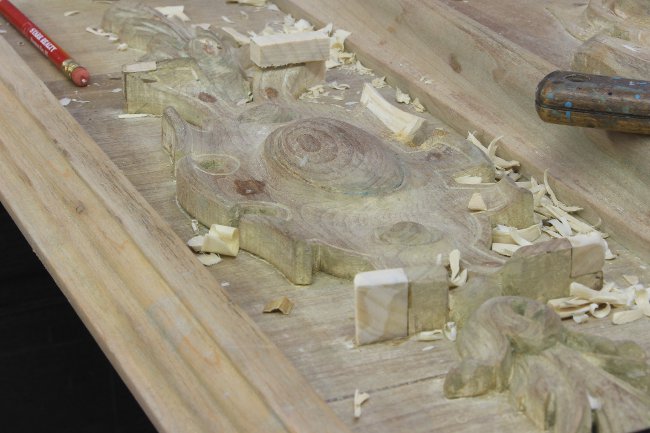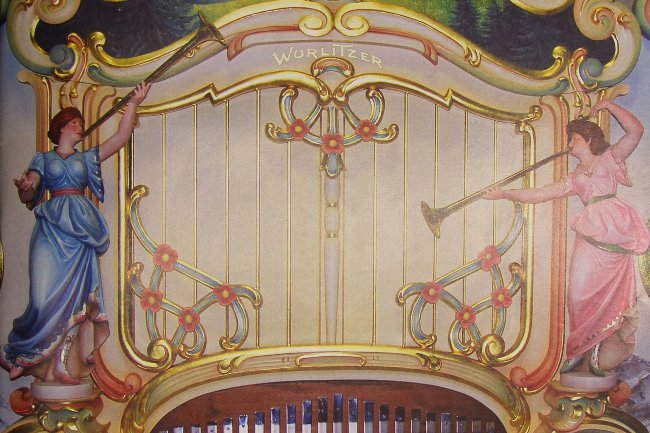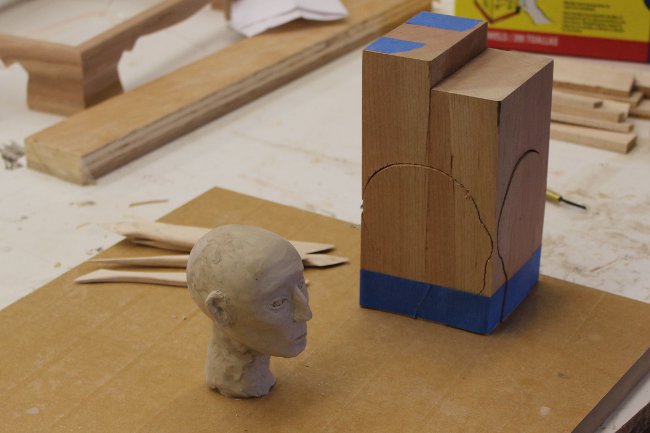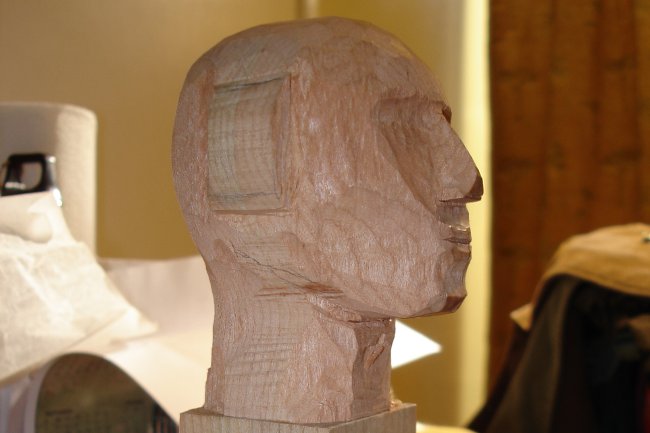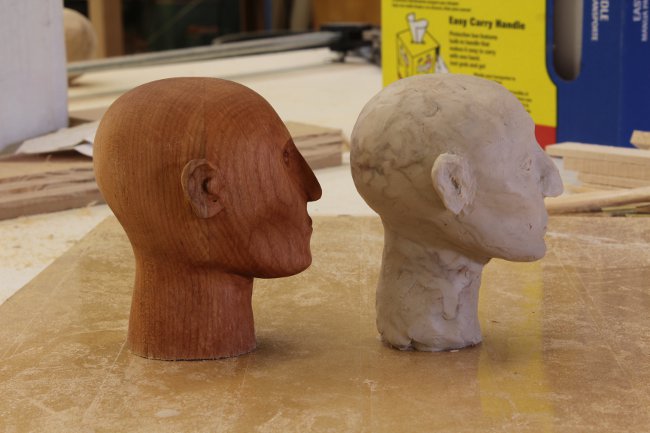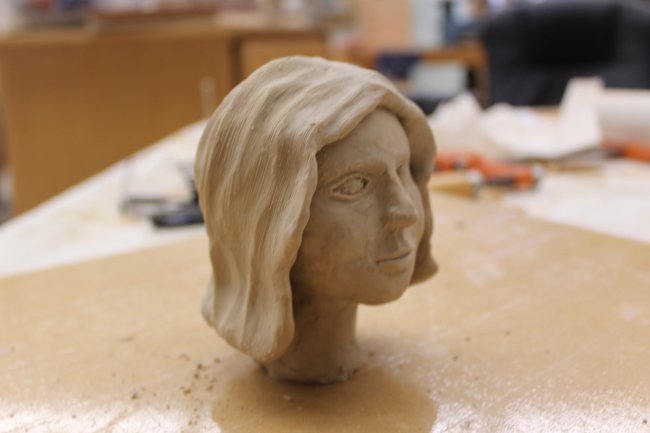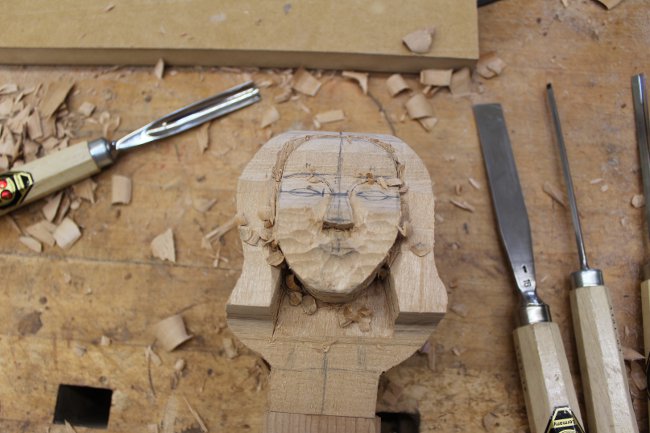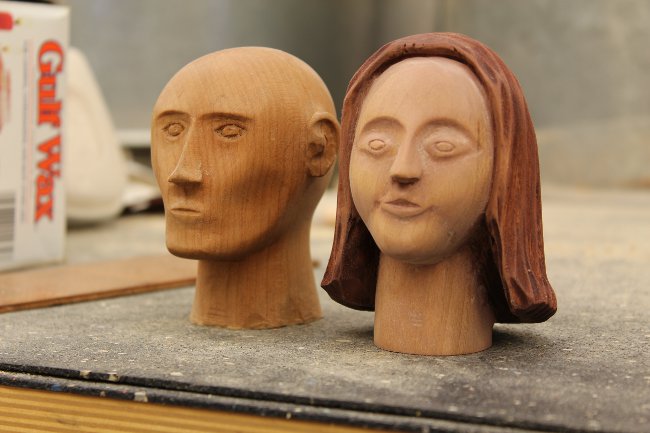Skill Building – How to Become a Master Carver
Practice. Ultimately, practice is the only way to master carving.
Last fall we did a little restoration and repair work on a band organ case for a neighbor who does organ restoration projects. That project involved paint-stripping, structural repairs and replacement of missing wood and decorative carvings.
Missing chunks of wood were replaced with small blocks then carved to shape
It wasn’t a church organ but it was related closely to one in many ways. Some of the companies that built those old band organs also built church organs and getting the opportunity to examine these up close may pay off in the future.
While working on that organ we also had the opportunity to see and listen to another band organ on the premises that is almost completely restored.
This is a large, automated musical device that plays an organ, drums and several other types of instruments.
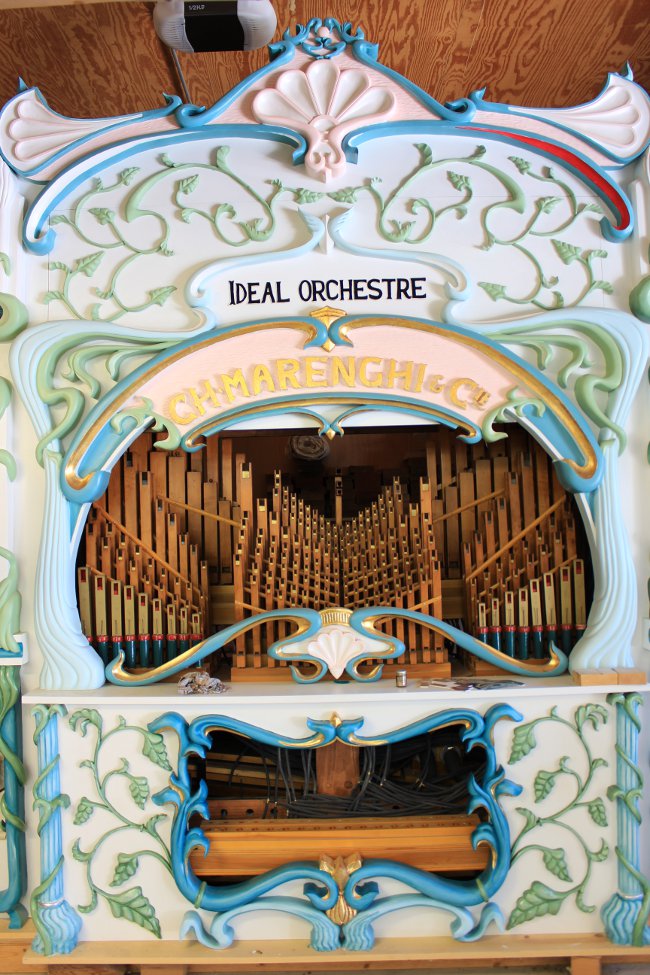
As it turns out, that organ is still missing some pieces – most notably two female statues approximately 18″ high. Since we did the carving repairs on the other organ, the owner inquired into the possibility of having us carve the two statues that he needed. I agreed to look into the matter.
This magazine cover shows two statues on a Wurlitzer organ. They are similar to what we will be carving.
I may have experience in the field but carving in three dimensions is more difficult than the high-relief work I’ve done in the past. Life-like sculpture is especially challenging. That being said, there’s no reason why the skill cannot be learned. Knowing how to sharpen the tools, being knowledgeable about wood and having skills in high-relief carving is a great start.
Practice. It’s time to start a practice regimen. Back when I was taking woodcarving classes my instructor informed me that I had good talent but not enough practice. He was saying that if I wanted to pursue the discipline with any success, I’d have to put lots of time into it. There’s no shortcut to be had here.
So how to practice? I chose to start with clay models. After purchasing 24lbs of Van Aken’s Klean Klay Alternative, I went to work sculpting a human face.
The first clay model sits next to a block of wood that has been roughly cut to profile.
Not good enough for the end product but it’s a start. When practicing it’s important not to let oneself get hung up over perfection. The goal here isn’t perfection but to do it better than the last time. This attempt is my first one so there’s no benchmark yet.
The sawn blank pictured above gets roughly shaped until the basic proportions are correct.
Here is the final product after it’s been smoothed and the details cut in. Side view of the same.
Not a bad first attempt. Certainly not good enough for a band organ statue but it’s a start. I was glad to see that the carved head actually came out better than the clay version. With that first head done the next step is to try a female one. For the second carving proper eyes and a more human appearance are important goals.
Same process as before. Make a clay model. This time around the sculpture is far more human in its features.
This time around I decided to carve some hair for a different type of challenge.
Until the bulk of the waste wood is cut away it’s helpful to treat the sculpture as a 2-dimensional object. I cut from the top until the different levels of the face were represented.The carving is complete here and the head is being refined and smoothed with files and sandpaper.
Two heads are better than one. I can now judge progress and decide where to focus future practice sessions.
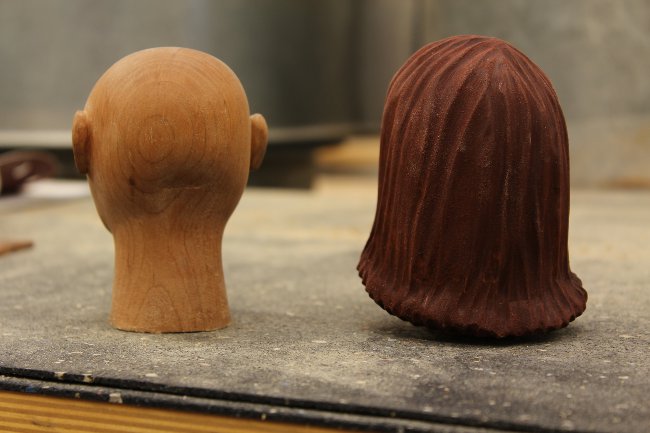
The new head is far more human. The hair is just a bit stiff perhaps but the texture works well.
I can tell now that the eyes are going to be the hardest part on faces. While the eyes on statue two are more promising, they need some re-working. Statue number 3 is going to be about the eyes.
After comparing the two heads there’s an obvious improvement. The second one still isn’t good enough for a band organ but it’s closer. I’ll soon start a third clay model and see if I can get the eyes right on the third try.
I estimate about a dozen heads to get the facial techniques down. After that, it’ll be time to practice full statues.

